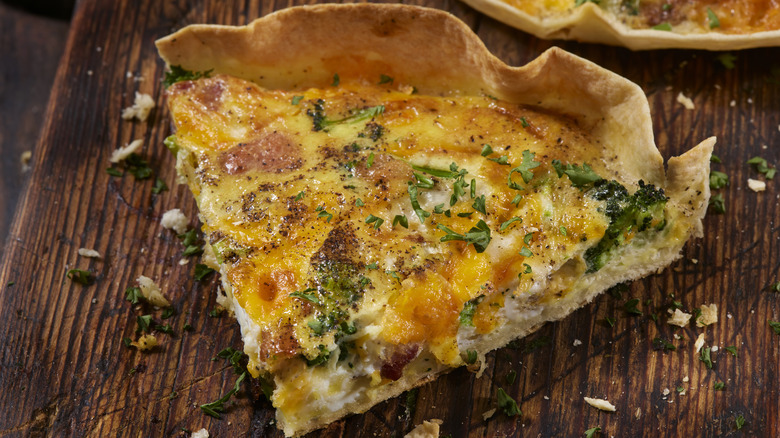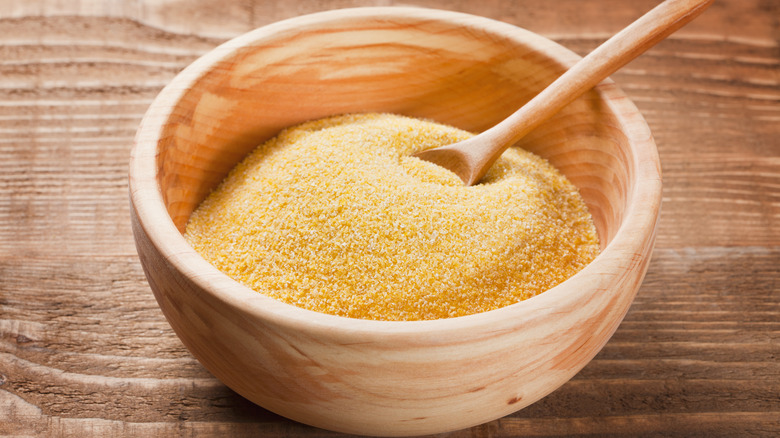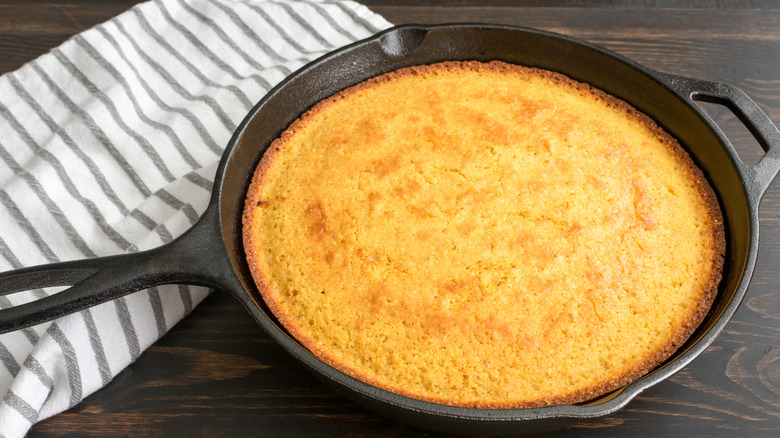Swap Pastry Dough With Grits For A Delicious Twist On Quiche
Even if you're a devotee of Southern cooking, you might still think of grits as little more than a pale bowl of buttery porridge. And while there are legions who consider this indispensable to a proper breakfast, it might be hard to imagine the dish taking on another textural form. This is likely because you've yet to encounter the crisp deliciousness of fried grit cakes (or grits croquettes, depending on how fancy you want to be). In the same sense, cooked grits can be transformed into a cheesy batter, which, when baked to a crusty firmness, will serve as a magnificent, complex substitute for quiche's typical pastry-dough shell.
That's because baked grits and a pastry shell, when used in quiche, might be different in form, but are the same in function. They both provide a sturdy base and a comforting enclosure. That's not to mean they're interchangeable, though; pastry dough, after all (not unlike our favorite pie crust) doesn't contain much more than flour, butter, salt, and water. Your grits quiche crust can be made with bacon pan drippings, milk, grated sharp cheddar cheese, sweet butter, egg, and seasonings. That's a wonderfully complex expression of such a humble foodstuff.
Grits are groceries
There's an old Southern expression: "Grits are groceries," because they'll fill your belly first thing in the morning. They're also the quintessential food for anyone on a budget, because grits are nothing more than ground corn, usually cooked with water. Nutritionally, grits aren't completely empty: They're decently high in iron and several different B vitamins. Best of all, they're a blank canvas that can be dressed up in all manner of ways — to start, take a look at these 13 ingredients that will make grits even tastier.
This versatility can be very much in evidence when you're using grits as a base for your quiche shell. When whisked into hot milk, butter, and bacon (or ham) drippings, and then further enriched with grated cheese, beaten eggs, and salt and pepper to taste, grits will not only be utterly delicious on their own, but will also set firm after about 20 minutes in the oven at 350 degrees Fahrenheit, forming a crispy crust. This is because few things are better than cornmeal at absorbing liquid and getting crispy.
A grits crust versus a pastry shell
No diss on pastry shells: If made well, they're delectably flaky and buttery, while still providing needed structure. And while you'll never make anything flaky with cornmeal, the sheer potential of grits for yielding satisfying flavors and textures is exponentially higher. On their own, grits have a slight nuttiness, which pairs beautifully with dairy adjuncts like butter and milk. When baked or fried (especially with the addition of grits' lifelong friend, bacon fat), they assume a golden brown color and crisp, pleasingly grainy texture.
Baking a grits-crusted quiche also gives you a chance to transform a staid French tart into an opportunity to put a little South in your mouth. Round out the egg filling with crisp-fried bacon or country ham; add the defining sharpness of grated cheddar cheese and the bright notes of green onions; enrich it with butter, milk, or cream. Heck, make the whole thing in your trusty iron skillet (which you should already be using for cast-iron cornbread anyway) and reap the gritty rewards.


